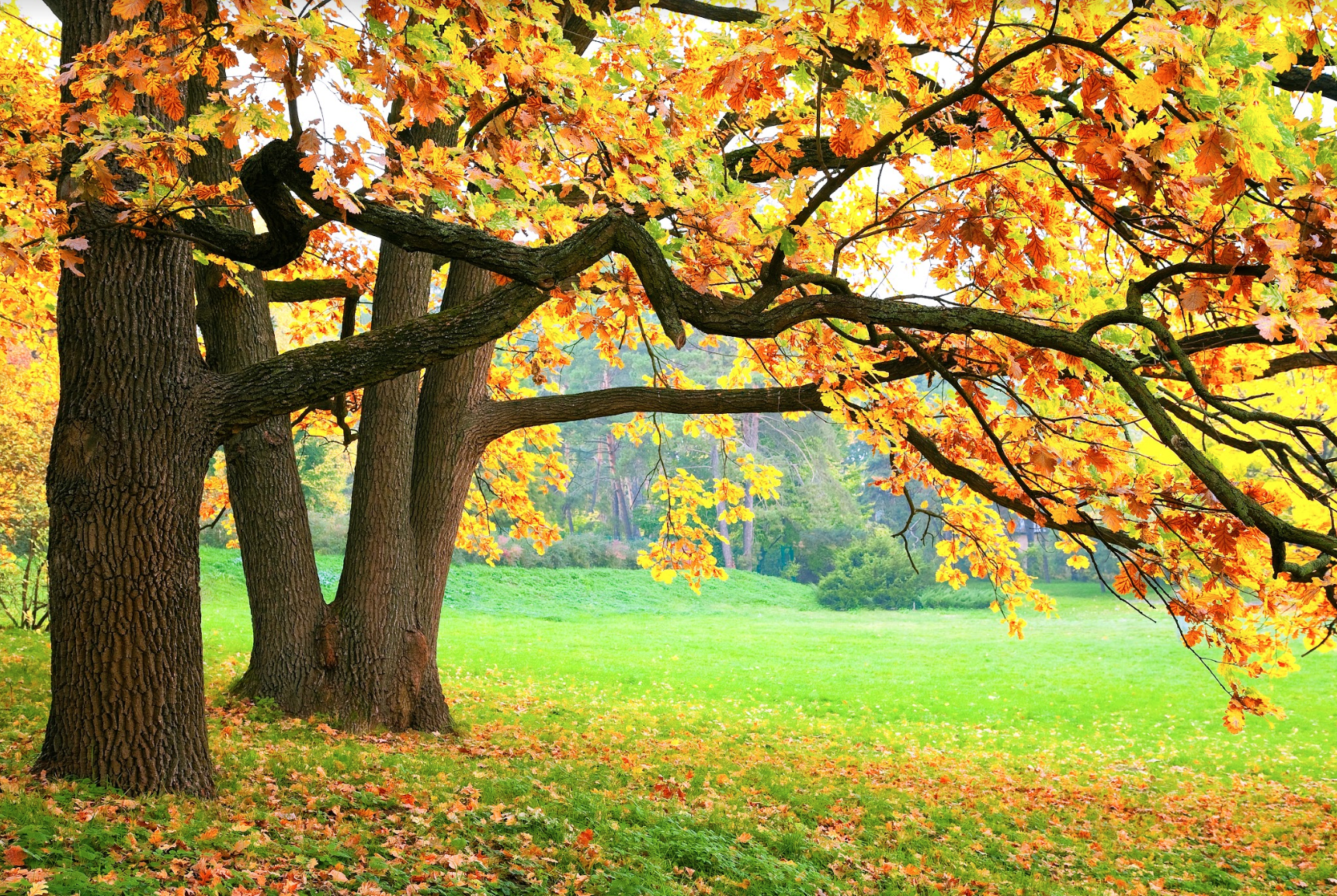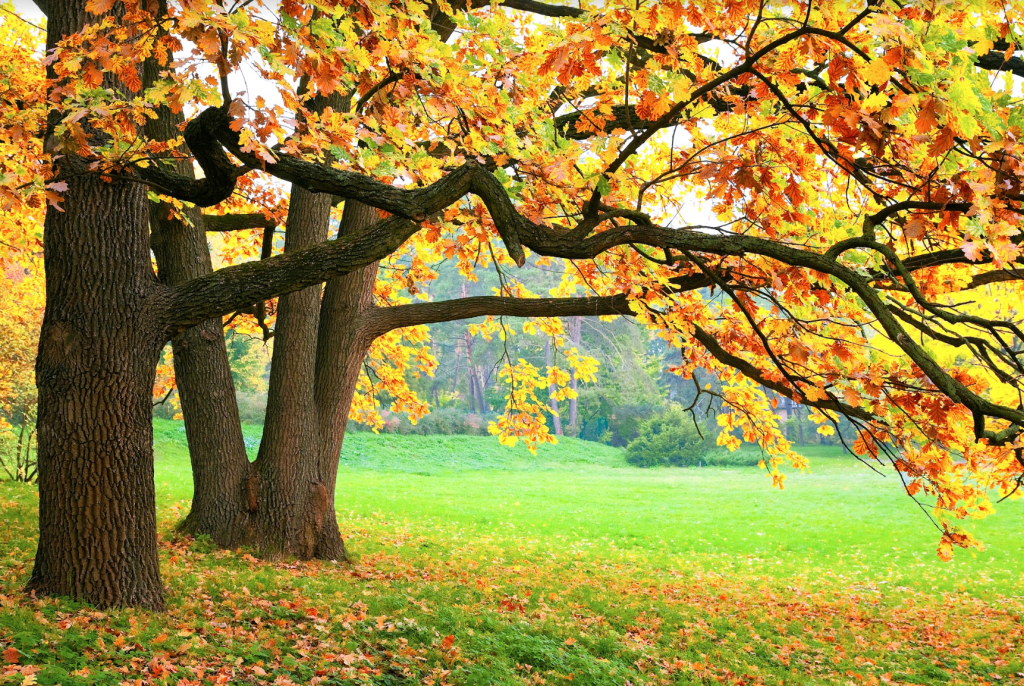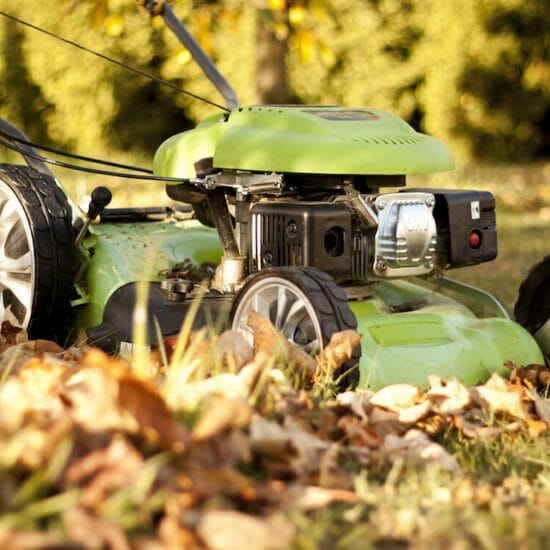
Fall lawn care is the ideal way to experience a lush landscape with minimal maintenance in the springtime. The ideal conditions that accompany the transition into cooler weather—like increased moisture in the air, warm soil, and cooler air temperatures—make it easier to work on your garden and lawn. In the early fall, the soil in your yard will still be workable. If you wait until the winter or even the early spring, you’ll be faced with heavy, wet, or frozen ground that’s nearly impossible to penetrate.

It’s best to start preparing for a rewarding spring about six weeks before the first freeze. The first step is to clear out any remains of dried-out annuals and other unsightly debris in your yard and flowerbeds that will prevent air and water flow. When you remove dead plants, you’ll also remove harmful insects that can spread disease once growing season begins.
Fall lawn care includes removing plants such as weeds like dandelions, clover, and crabgrass. Fall is a great time to apply weed preventer as a spray or in granular form, because soil is moist and will absorb the treatment. Unlike weeds, perennials should stick around from year to year. Prime them for new life in spring during the fall, by removing any dieback and cutting their stems to within an inch or two of the ground. Like perennials, flower bulbs are a happy sight when the warmer months hit. Fall is the best time to get tulips, daffodils, and other bulbs into the ground before it freezes.
After the grass is cleared, it’s time to mow. As you prep for fall lawn care, it’s best to place your mower settings much shorter than any other time of the year. Set your mower to cut 1.5 to 2 inches to increase sun exposure and airflow and to eliminate the possibility of tall blades smothering new grass.
Once your lawn is debris-free and mowed, we suggest getting it aerated. Aerating your lawn is one of the most important things you can do to maintain a healthy and attractive landscape, and if you can only do it once, the fall is the best time. The process simply includes making holes in the ground by removing plugs of soil. Adding pores to the ground will relieve compaction caused by foot traffic and create extra space in the soil for access to air, nutrients, and water, allowing the roots to thrive.

If a rough summer has left your yard with patches of dirt, don’t wait until the spring to address them. Whether it’s one small patch or your entire yard, early fall lawn care is the best way to reseed your lawn because of the cooler temperatures and the increased moisture. Once you’ve put the seeds in place, water, water, water. It may seem counterintuitive to water your lawn once hot summer days are behind you, but it’s just as important (maybe even more) to keep your grass hydrated as the fall crawls in.
Even if you didn’t need to reseed your lawn, fall watering gives your yard a boost as it recovers from harsh heat and heavy foot traffic. If your grass is strong going into the winter, it’ll have the muscle to stand up to winter’s destructive elements. It’s also recommended that you fertilize in the fall (more on that later).
As the leaves fall, continue raking and watering whenever it’s dry. If leaves are left untouched, the first snow will turn them into a damp mat that restricts sunlight and air completely. Not a fan of raking? We suggest using a mulching mower on dry leaves that will shred them into tiny flakes. Those tiny flakes will settle into the grass and decompose over time into natural fertilizer. A 2 to 4-inch layer of shredded leaves creates a natural compost that will enrich the soil throughout the winter.
If you live in an area with trees that don’t produce a significant amount of leaves, or if you opt for a different leaf-removal method, there are plenty of other ways to fertilize your yard. Regardless of if you choose store-bought fertilizer or use the leaf-shredding method, it’s best to apply your fertilizer of choice about three weeks before you mow for the last time. Fertilizing early in the fall gives nutrients to the roots that will keep them fed all winter, even when the grass goes dormant.
Debris cleared? Check. Perennials trimmed? Check. Grass aerated? Check. Yard watered? Check. Leaves cleared? Check. Fertilizer? Check. Once you’ve gone down the list of must-do tasks to get your yard ready for fall and winter, make sure it’s prepared to take on the snow. We recommend removing any rocks that could hide under a layer of fluffy stuff, extension cords that could easily go missing, garden hoses, kids’ toys, and anything else that should come inside for the winter. To keep your flowerbeds intact, mark the edges so a playful snow day doesn’t result in ruined gardens.
No matter your climate or expectation of snow, acting early is the best way to prepare your lawn for a flourishing and healthy spring. Taking these steps is the best prescription for giving your yard the strength it needs to make it through the winter and the fuel it needs to reemerge beautifully when warmer temperatures say hello. Give us a call at Ohio Valley Group at 440-543-0500 to talk about how you can improve your outdoor landscape so you can relax when the weather turns warm again.


